编者按 从2015年4月到2016年7月,OMA(由普利兹克建筑奖获得者,荷兰建筑师雷姆·库哈斯领导的建筑事务所)陆续对外公布了他们的3个建筑改造项目,分别是米兰的PRADA基金会园区、莫斯科的车库当代艺术博物馆和威尼斯的16世纪德国商馆改造。在建筑改造早已成为重要议题的今天,建筑界一向敢为人先的OMA,似乎对此也有话要说。OMA如何看待历史保护话题,又如何进行建筑改造设计?从米兰到威尼斯,一起来看OMA从未揭示过的,他们对历史保护与建筑改造的野心。
原文由威尼斯项目主创建筑师 Ippolito Pestellini Laparelli 撰写,OMA授权有方发表。
节制的可能性
The possibility of abstinence
当下,我们正处于一个极度迷恋过去的时刻。
We live in a moment of extreme fascination with the past.
著名音乐评论家Simon Reynolds在自己的著作《表演者:流行文化对自身过去的迷恋》(Retromania, pop culture's addiction to his own past)里,调查了音乐行业里通过重制、续集、重演以及混搭等形式复古怀旧的固态。他提出,从未见过一个社会,竟如此迷恋自身过去的文化制品。当下的我们,正处于一个文化怀旧的时刻。“是怀旧阻止了我们文化前行的步伐,还是文化前行的步伐已经停止,以至于我们不可避免地去追忆过去更有活力的时代?”放眼望去,同样的现象似乎已经在西方文化制造业的各个方面蔓延开来。从当代艺术到电影、时尚、产品设计,当然,还有建筑业。
In his book “Retromania, pop culture’s addiction to his own past,” music critic Simon Reynolds investigates the fixation of the music industry with going retro, through remakes, sequels, re-enactments, mash-ups, and so on. He argues that there has never been “a society so obsessed with the cultural artifacts of its recent past” and that generally, the current moment is one of cultural reminiscence. “Is nostalgia stopping our culture’s ability to surge forward, or are we nostalgic precisely because our culture has stopped moving forward and so we inevitably look back to more momentous and dynamic times?” By extension, the same phenomenon seems to permeate all aspects of western cultural production, from contemporary art to cinema, fashion, product design, etc. and obviously also architecture.
对过去怀旧式的投降,作为与历史建立起前瞻式关系的反面,其中蕴含的意义十分深远。Svetlana Boym在《怀旧的未来》中分析了这种对立性:“第一眼看,怀旧似乎是对场所的怀念,但实际上是对不同时间的向往,比如向往童年的时间,梦里缓慢的节奏。从更广阔的角度来看,怀旧是对现代“时间”观念(关于历史与进步的时间)的一种反叛。
The implications of a nostalgic surrender to the past as opposed to a proactive relationship with history are deep. Svetlana Boym investigates this opposition in The Future of Nostalgia: “At first glance, nostalgia is a longing for a place, but actually it is a yearning for a different time - the time of our childhood, the slower rhythms of our dreams. In a broader sense, nostalgia is a rebellion against the modern idea of time, the time of history and progress.”
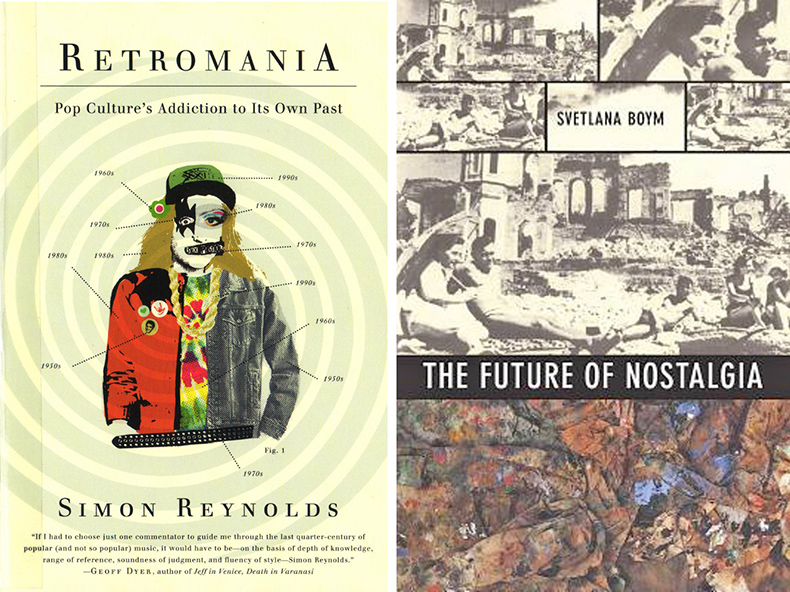
人们逐渐增长的怀旧心理所带来的影响是巨大的,并且潜在地具有毁灭性:不接受改变与现代化是一场必然的变革;专注于修复与重建过去的文字;优先制定的标准使得新的项目也开始仿古,最后揉杂成一锅混合了过去与现在所谓“真实性”又不明所以的汤。
The consequences for our practice of an increasing but nostalgic attention to the past are huge and potentially devastating: a growing resistance in accepting change and modernization as an inevitable evolution; philological restorations focused on a literal reconstruction of the past; preemptive norms forcing new projects to look like old ones, generating an undefined soup of past and present“authenticities.”
在2010年的威尼斯建筑双年展上,OMA展示了大量关于历史保护的工作成果。这场名为“Cronocaos”的展览,很有野心地想要在建筑师群体里重新引发一场讨论,关于“历史保护作为一种全球化的、矛盾的现象,对建筑甚至其他更多方面所产生的非理论化影响”。
At the Venice Architectural Biennale of 2010, our office presented a body of work focused on our persistent preoccupation with preservation and with the past. The exhibition was symbolically named Cronocaos. It had the ambition to revitalize among architects the debate around preservation as a global and contradicting phenomenon with untheorised implications for architecture and beyond.
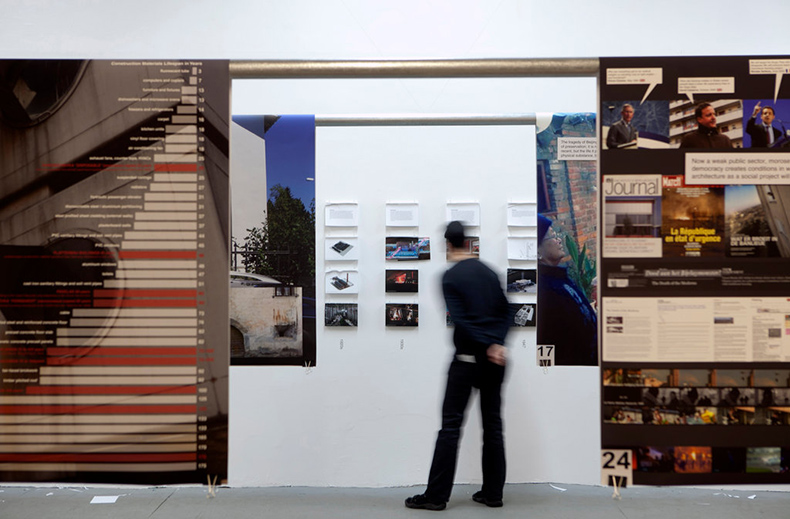
这场展览显示出:当下正在呈指数增长的全球化保护行动:随着加速发展区域越来越多,我们的地球上需要拯救的部分也越来越多;我们对协商激进改变与激进保留之间共存的无能;我们缺乏控制历史保护效果的工具,或者说不懂得如何让“过去”保持生机;我们对过去与“真实性”日益增长的迷恋,不是作为一种历史与客观的范畴,而是一种怀旧与再设计;保护思想对某种特定真实性的偏向,相反,某些政治上令人不适,但又确实是历史存在的真相反而被终结;历史保护的政治影响成为刺激经济发展的一种手段,历史保护也会基于政治正确而不是文化关怀;历史保护会重点保护特殊个例,而选择性地忽视那些一般性的;拆除被视作保护的一种必然的反面论调的可能性,等等。
It showed the recent but exponential increase of scale and action of the "global task force of preservation to rescue larger and larger portions of our planet embedded in equally larger and larger areas of accelerated development"; the inability of the current moment to negotiate the coexistence of radical change and radical stasis; the absence of tools in the arsenal of preservation to deal and manage its effects, or how to keep the past“alive”; our growing fascination with the past and the“authentic”, not as a historical and objective category, but rather a nostalgic, reengineered version of it; preservation’s preference towards certain authenticities as opposed to politically uncomfortable ones, which are terminated even if historically relevant; the political implications of preservation as a tool for economic development, subject to political correctness more than to cultural concerns; the focus on preserving the exceptional and the lack of ideas for preserving the generic; the possibility of demolition as a necessary and opposite theory to preservation…
展览还展出了27个OMA“从未展示过的关于过去与历史的”项目。跨越超过30年的实践,它们显示出OMA一直潜在、从未对外宣布过的对历史保护的兴趣。从这27个项目的建筑概念层面上来看,OMA展示出了他们处理不同历史、文化与环境背景下现状问题的能力。
In tandem with our theoretical speculations, the exhibition also featured 27 OMA projects never "presented before as a body of work concerned with time and history". Spanning across more than 30 years of practice, they showed OMA’s latent yet undeclared interest in preservation, highlighting 27 architectural concepts of how OMA dealt with the existing, in different historical, cultural and environmental contexts around the world.
并不是宣扬任何教条,“Cronocaos”展览只是怀有提出问题的野心:在强调矛盾与模式的同时,含蓄地承认不存在任何一种全球化单一的历史保护理论。
Far from declaring any dogma, Cronocaos had the ambition to raise questions, highlighting contradictions and patterns, while implicitly recognizing the impossibility of a global single theory for preservation.
就在“Cronocaos”展览展出的时候,OMA刚好参与了3个与历史保护相关的改造项目,它们启动的时间很接近:米兰的Prada基金会,威尼斯的16世纪德国商馆,莫斯科的车库当代艺术博物馆。
It is not a coincidence that Cronocaos happened at the climax of our theoretical interest in the subject and of our active involvement in practice through three key and very different projects, started more or less at the same time: Fondazione Prada in Milan, Il Fondaco dei Tedeschi in Venice, and the Garage Center for Contemporary Art in Moscow.
米兰的Prada基金会,前身是一个19世纪的酒厂。项目改造的一系列策展技术和展览策略,针对不同规模和特色的艺术,设计了对应的展览空间。该项目对现有结构进行了三项简单的改造,来补充目前缺少的博物馆空间:一个大型开放式博物馆的大厅,顶部是一个大跨度画廊,和高度逐渐增加的多层塔楼。项目改造集中在园区内部,从外面几乎看不见,改造使建筑的室内/室外空间形成一个连续的序列,新旧在此相遇,变成一种永久相互作用的平衡状态。
In Milan, Fondazione Prada occupies the spaces of a former 19th century distillery. Crafted as a catalogue of curatorial techniques and display strategies, the project is conceived as a rich repertoire of spaces for the arts, ranging in scale and character. Three simple new architectural interventions were added to the existing structures to complement the catalogue of museum spaces: a large open plan museum hall with a long beam gallery space on top, and a tower of stacked floors with incrementally increasing heights. Almost invisible from the outside, the project works as a continuous sequence of indoor/outdoor spaces, where old and new meet dynamically, hanging in balance in a state of permanent interaction.
这两种通常分开讨论的空间条件,在这里相遇并融合,但它们并不会凝结成一个单一的印象,或让某一部分控制其他部分。在建筑改造的部分,可以看到OMA使用的一系列保护技术——从功能化的再定义到新的建筑体块的小心添加,从对一座被拆除的建筑的完全重建,到通过简单的涂层给现有建筑带来新生。完全不同于一些恋物者对现有建筑的依恋,新旧在这个项目中无缝对接甚至相互融合,使得这个艺术中心不能仅用一个建筑保护或者新建项目来定义,而应该概括为两者的连续统一体。
Two conditions that are usually kept separate here confront each other, offering an ensemble of fragments that will not congeal into a single image, or allow any part to dominate the others. While walking through the new complex, you are confronted with a collection of preservation techniques – from bare re-functionalization to the careful introduction of new volumes, from a verbatim reconstruction of a demolished building to the simple application of one layer of coating to inject new life into the preexisting. Far from any fetishist attachment to the existing, old and new seamlessly work together and sometimes are actually merged, to the point that one cannot say that Fondazione is either a preservation project or a new architecture, but rather a curated continuum of both.
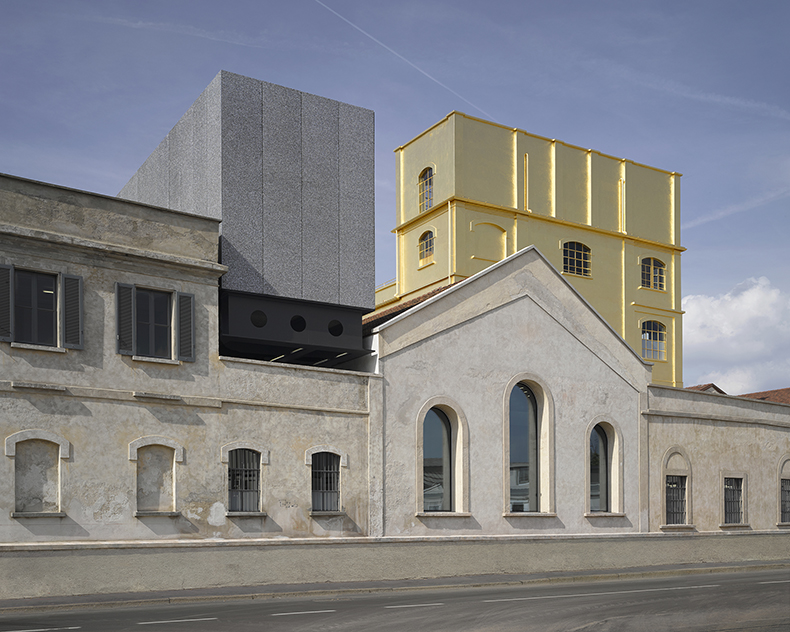
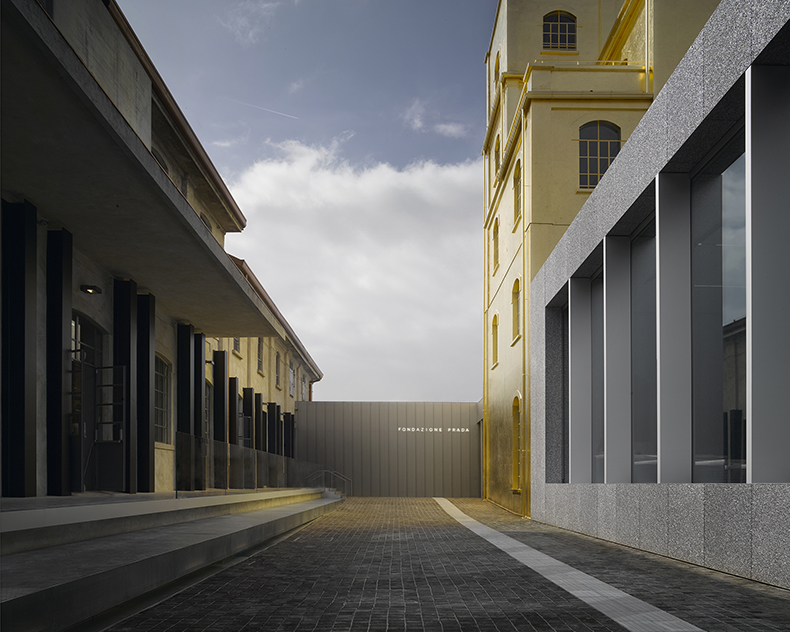
在威尼斯,OMA接受了将一个16世纪的德国贸易仓库(18世纪变成海关办事处,1930年代又变为邮局)改造成为一家现代化百货商场的挑战。在法西斯政权期间,建筑几乎完全使用现代混凝土技术进行重建,成为了一个现代物质的历史复制品,对它的保护措施跨越了5个世纪的建造技术。不顾其自适应的历史过程和结构真实性的客观缺失,它如今作为“纪念碑”的法律地位已把它置于严格保护之下,几乎禁止了任何对建筑的改造。因此,接手这个项目意味着必须要面对这一悖论。
In Venice we faced the challenge of transforming a former 16th century German trading warehouse (which became an 18th century customs office, then a 1930s post office) into a contemporary department store. Almost entirely reconstructed with modern concrete technology during the fascist regime, il Fondaco dei Tedeschi is a historical palimpsest of modern substance, its preservation spanning five centuries of construction techniques. Regardless of the history of its adaptations and the objective lack of authenticity of its structure, its legal status of“monument”places it today under a severe regime of preservation, forbidding almost any change. Dealing with it meant facing this paradox.
经过多年与市政府、国家文物机构和当地民间保护组织的谈判,该项目现已基本落实。改造基于有限的本土干预措施以及直通新的屋顶平台的竖向分配设备。每一项干预都可以视作是对目前建筑体量的粗暴挖掘,激发新的视角并向游客揭示这座建筑的真正的内涵。用严肃似法庭的态度,每一个新的组件都是展现出材料和施工技术的层次。对16世纪德国贸易仓库的保护也是这座建筑变革的历史:一方面,它回避了对过去怀旧式的重建,另一方面,它用揭示发生在它身上的真实暴行的方式,阐明了其历史建筑的“神圣”形象。
After years of creative negotiation with the city authorities, national heritage institutions and with local groups of defensive citizens, the project is now materializing. It is based on a finite number of local interventions and vertical distribution devices culminating in a new roof terrace space. Each intervention is conceived as a brutal excavation through the existing mass, liberating new perspectives and unveiling the real substance of the building to its visitors. With an almost forensic attitude, each new component serves as a way to show the stratification of materials and construction techniques. The preservation of the Fondaco dei Tedeschi is the history of its change: it avoids nostalgic reconstructions of the past and it demystifies the“sacred”image of the historical building revealing its authentic brutality.
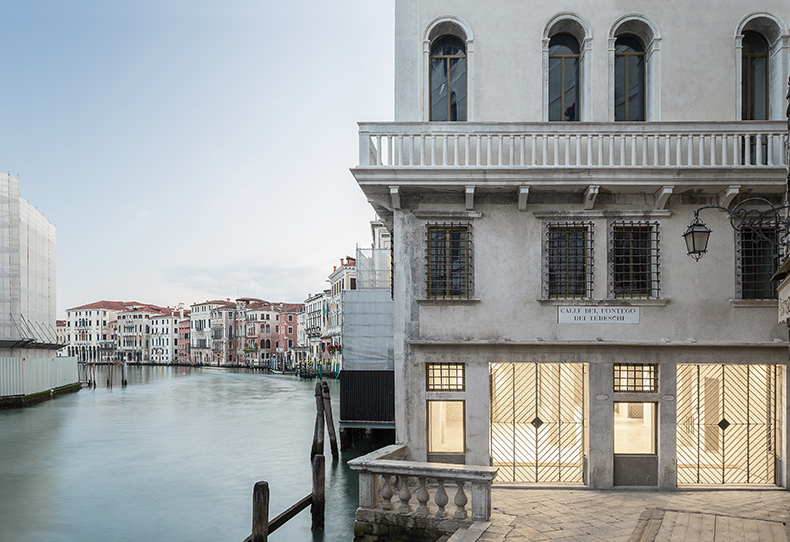
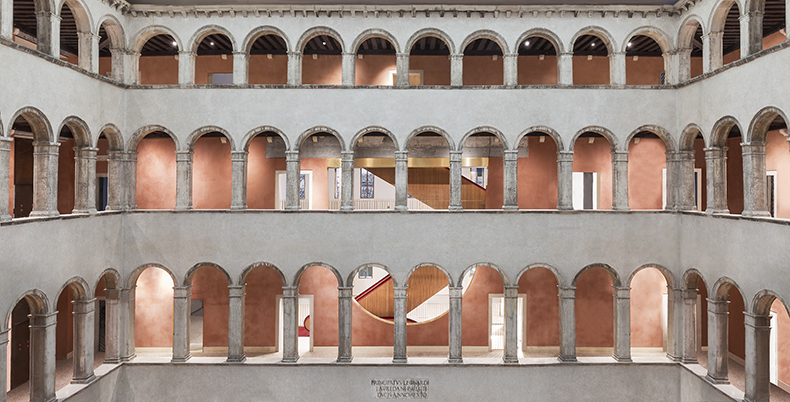
在莫斯科的项目改造中,OMA需要将一个苏联的咖啡馆改造成为当代的艺术博物馆。这为他们尝试对一般的现代建筑的保护提供了机会。他们有意地保留了原来损伤的结构,并对其进行了最小干预的修复,留下了原有的瓷砖、砌砖、马赛克,尽可能的展示苏联建筑的特点。改造的重点是对这座建筑物历史的保存,同时将衰变也作为历史的一部分进行保留。建筑新的外立面是几层半透明的聚碳酸酯面板,原有的建筑被这些囊括了所有技术核心的材料包围着,就像是在混凝土废墟外面构架起一座智能圣殿。
In Moscow the transformation of a soviet café’into a contemporary art museum has offered the opportunity to experiment on the preservation of a generic modernist building. The original structure has been intentionally left bruised and repaired with minimal intervention, unveiling original tiles, brickworks, mosaics and exposing the generosity of Soviet architecture. The focus here is the preservation of the history of a the building, and decay as part of that history; the new façade – translucent layers of polycarbonate panels containing all technical arteries – acts as an intelligent shrine around a concrete ruin.
类似于几个“无意识保护”的案例——维苏威火山爆发后的庞贝古城遗址,切尔诺贝利核泄漏事故或福岛核事故后的弃城——在这个原来的车库中,我们对现状进行了保留,将现存建筑视作工艺品,并增加了新的元素使其可以成为一个现代博物馆。我们并没有 “政治性”地去选择保留什么,而是希望可以将这个历史时刻铭记于此。
Almost as in cases of“unintentional preservation”– ruins of Pompeii after the eruption of Vesuvius, abandoned Chernobyl or Fukushima after the nuclear accidents – at Garage, we preserved the found condition, keeping the existing building as an artifact, and added new elements to make it perform as a contemporary museum space. There is no“political”selection of what to preserve, but rather the intention to freeze a moment in history.
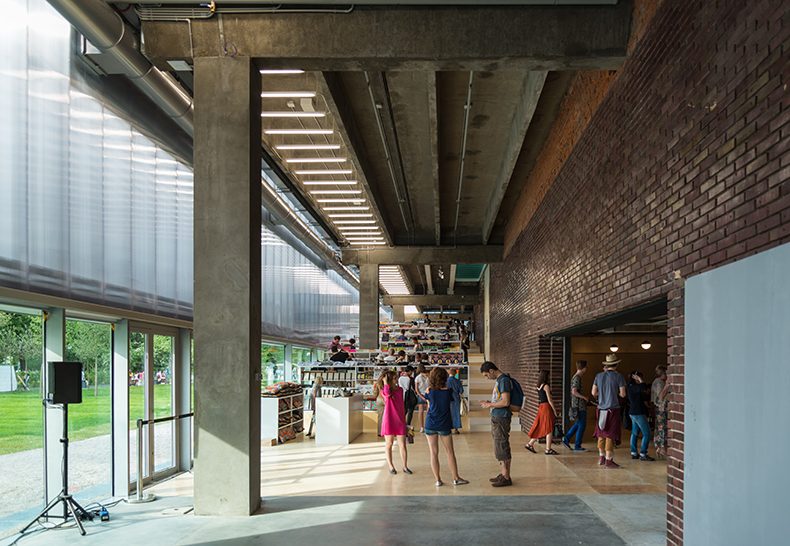
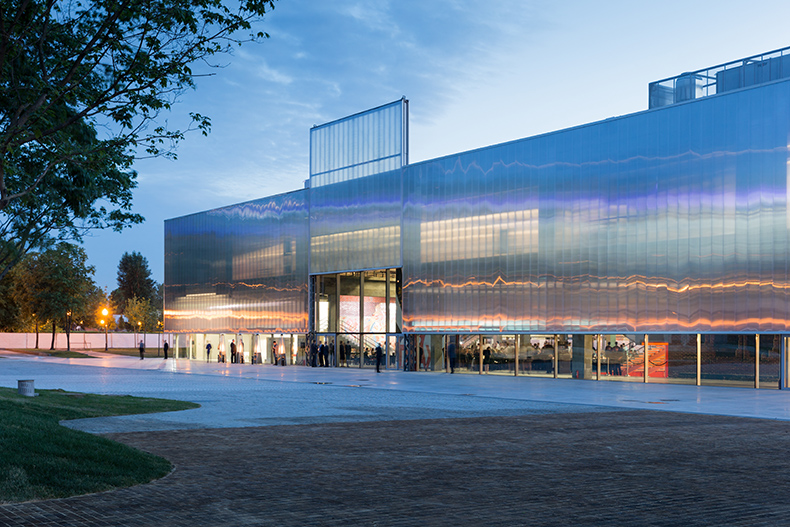
一个大型建筑事务所如此痴迷于建筑保护,似乎让人很难理解。因为这种项目往往会期望事务所能将原有建筑改造成为一座独一无二的新建筑,但这对于事务所而言也是一种压力。而如果将关注的焦点转移到对环境,对更细腻的当下的细微理解,压力则会舒缓很多。
It might seem strange for a big architectural office to develop an obsession for preservation. Normally challenged by the expectations – and the burden – of delivering the next exceptional building, the idea to shift the focus to a more subtle understanding of context and to a more delicate presence is a big release.
建筑师们不再过多地执着于城市天际线,因此对于建筑保护的关注,或者对于现有城市肌理的再利用,改变了他们的想法。他们开始将更多关注的焦点放在项目本身、建筑的历史、各种系统、技术、材料等方面,而不只是关注建筑外形。这其中的含义很简单:这是从利己主义和标志主义,向“无形”和“传承”的根本性转变。
Less obsessed with the need to affect the skyline of cities, the attention to preservation and more generally to the reuse of existing urban fabrics challenges architects with a different set of questions which are less focused on form and more on program, histories, systems, technology, materials, etc. The implication is simple: a radical shift from the egocentric and iconic to the invisible and contextual.
建筑保护可以视作是一种政治行为。它会触发城市规划师、开发商、建筑师和承包商考虑多种运营模式,站在城市的过去投资城市的未来,用对现有建筑的再利用来取代新建。建筑保护是一种可以等同于城市现代化和增长的有效形式,要避免无序增长、因现代市场的波动而产生、以及还没投入使用就被空置的新建建筑。
By doing this, preservation is a political act. It triggers city planners, developers, architects and contractors to consider alternative models of operations, investing in the future of cities from their own past, reusing existing buildings as opposed to building new ones. Preservation can be an equally if not more efficient form of urban modernization and growth, avoiding inconsiderate accumulations of new buildings, subject to the fluctuations of the modern market and often left vacant before even coming into life.
当建筑保护面对最终的表现和场地的要求时,甚至可以撼动建筑实践的基础。给建筑师全部的技能中加入节制这一项,无所作为或几乎不作为,避免设计和建造,避免使用强大的技术,但也避免不使用任何技术。
In its ultimate manifestation and when the situation requires it, preservation can even shake the foundations of architectural practice, introducing the possibility of abstinence in the architect's repertoire: doing nothing or almost nothing, avoiding designing and building, powerful tools as much as their opposites.
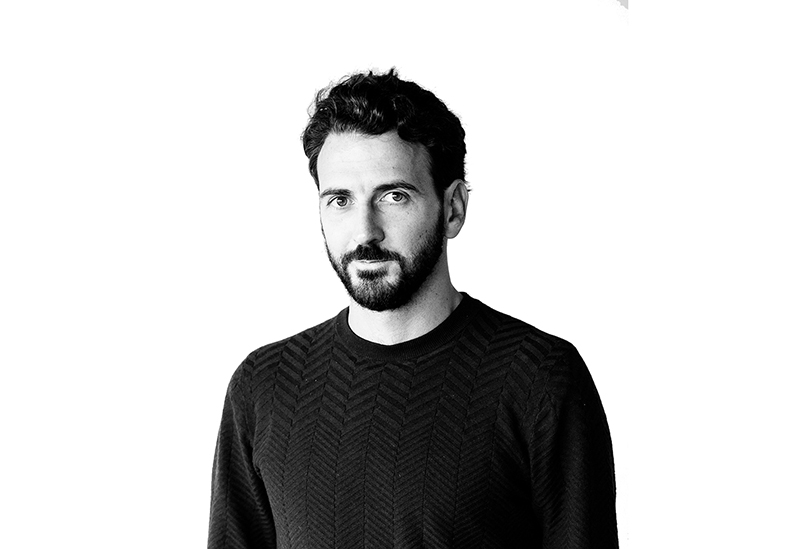
翻译 | 李菁琳 吴安格
校对 | 卡斯密
版权声明:本文版权归有方所有,文中图片版权均归OMA所有。欢迎转发,禁止转载。
上一篇:OMA建筑改造 | 威尼斯德国商馆
下一篇:尚上讲堂第二期 第二场(上)|刘小东:空城记|有方讲座